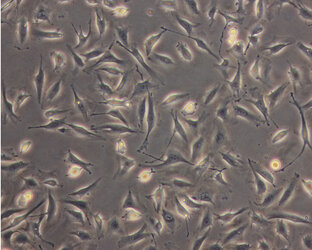Accept all cookies Accept only essential cookies See our Cookie Notice

About ESA
The European Space Agency (ESA) is Europe’s gateway to space. Its mission is to shape the development of Europe’s space capability and ensure that investment in space continues to deliver benefits to the citizens of Europe and the world.
Highlights
ESA - United space in Europe
This is ESA ESA facts Member States & Cooperating States Funding Director General Top management For Member State Delegations European vision European Space Policy ESA & EU Space Councils Responsibility & Sustainability Annual Report Calendar of meetings Corporate newsEstablishments & sites
ESA Headquarters ESA ESTEC ESA ESOC ESA ESRIN ESA EAC ESA ESAC Europe's Spaceport ESA ESEC ESA ECSAT Brussels Office Washington OfficeWorking with ESA
Business with ESA ESA Commercialisation Gateway Law at ESA Careers Cyber resilience at ESA IT at ESA Newsroom Partnerships Merchandising Licence Education Open Space Innovation Platform Integrity and Reporting Administrative Tribunal Health and SafetyMore about ESA
History ESA Historical Archives Exhibitions Publications Art & Culture ESA Merchandise Kids Diversity ESA Brand Centre ESA ChampionsLatest
Space in Member States
Find out more about space activities in our 23 Member States, and understand how ESA works together with their national agencies, institutions and organisations.
Science & Exploration
Exploring our Solar System and unlocking the secrets of the Universe
Go to topicAstronauts
Missions
Juice Euclid Webb Solar Orbiter BepiColombo Gaia ExoMars Cheops Exoplanet missions More missionsActivities
International Space Station Orion service module Gateway Concordia Caves & Pangaea BenefitsLatest
Space Safety
Protecting life and infrastructure on Earth and in orbit
Go to topicAsteroids
Asteroids and Planetary Defence Asteroid danger explained Flyeye telescope: asteroid detection Hera mission: asteroid deflection Near-Earth Object Coordination CentreSpace junk
About space debris Space debris by the numbers Space Environment Report In space refuelling, refurbishing and removingSafety from space
Clean Space ecodesign Zero Debris Technologies Space for Earth Supporting Sustainable DevelopmentLatest
Applications
Using space to benefit citizens and meet future challenges on Earth
Go to topicObserving the Earth
Observing the Earth Future EO Copernicus Meteorology Space for our climate Satellite missionsCommercialisation
ESA Commercialisation Gateway Open Space Innovation Platform Business Incubation ESA Space SolutionsLatest
Enabling & Support
Making space accessible and developing the technologies for the future
Go to topicBuilding missions
Space Engineering and Technology Test centre Laboratories Concurrent Design Facility Preparing for the future Shaping the Future Discovery and Preparation Advanced Concepts TeamSpace transportation
Space Transportation Ariane Vega Space Rider Future space transportation Boost! Europe's Spaceport Launches from Europe's Spaceport from 2012Latest

Inner space
Thank you for liking
You have already liked this page, you can only like it once!
A human endothelial cell that was flown to the International Space Station and returned to Earth for analysis is helping researchers keep astronauts healthy in space.
Endothelial cells line our blood vessels and help contract and expand the vessels as needed and so are instrumental in maintaining pressure and a healthy body.
The Endothelial Cells experiment flew to the International Space Station in 2015 to understand how the cells react to weightlessness.
Blood flow changes in space because gravity no longer pulls blood towards astronauts’ feet. By understanding the underlying adaptive mechanisms of how our bodies respond to weightlessness, the experiment aims to develop methods to help astronauts in space while showing possibilities for people on Earth – our endothelial cells become less effective with age – to live longer and healthier lives.
Cultured human endothelial cells were grown in space in ESA’s Kubik incubator for one week and then ‘frozen’ chemically for analysis back on Earth.
As expected, the cells started to express genes differently to cells that stayed on Earth, attaching and moving differently while in space. After careful comparison in the lab, researchers have published a paper with first results confirming that the cells suffer stress from spaceflight.
Importantly, the research is showing how the cells adapt to the stress and provides clues as to how we could help endothelial cells to stay healthy in space and in patients on Earth.
For the curious, the image shows human capillary endothelial cells HMEC-1, red: b-catenin, blue: nuclei, using a Fluorescence Zeiss PALM MicroBeam Microscope at 63x magnification.
-
CREDIT
Ivana Barravecchia, Debora Angeloni, Institute of Life Sciences, Scuola Superiore Sant’Anna, Pisa, Italy. -
LICENCE
ESA Standard Licence

Human endothelial cells 2

Human endothelial cells

Endothelial cells

Endothelial cells















 Germany
Germany
 Austria
Austria
 Belgium
Belgium
 Denmark
Denmark
 Spain
Spain
 Estonia
Estonia
 Finland
Finland
 France
France
 Greece
Greece
 Hungary
Hungary
 Ireland
Ireland
 Italy
Italy
 Luxembourg
Luxembourg
 Norway
Norway
 The Netherlands
The Netherlands
 Poland
Poland
 Portugal
Portugal
 Czechia
Czechia
 Romania
Romania
 United Kingdom
United Kingdom
 Slovenia
Slovenia
 Sweden
Sweden
 Switzerland
Switzerland
























